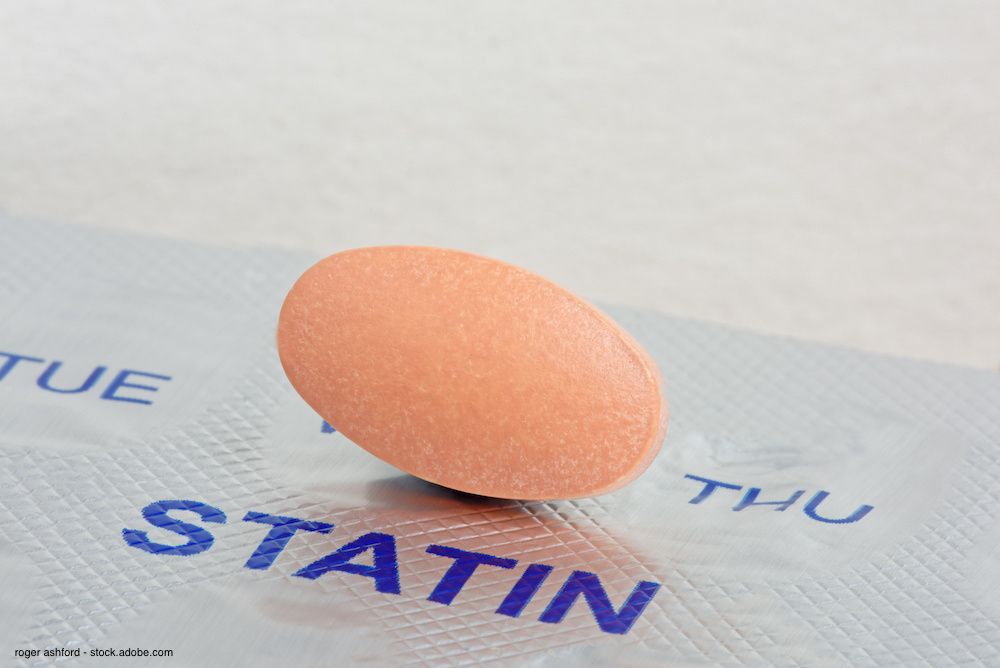Article
Longer-term statin use linked to prostate cancer risk reduction
Author(s):
Men who take statins for at least 11 months might be at lower risk for low- and high-Gleason grade prostate cancer than men who do not take the cholesterol-lowering drugs, according to a recent study.
roger ashford - stock.adobe.com

Men who take statins for at least 11 months might be at lower risk for low- and high-Gleason grade prostate cancer than men who do not take the cholesterol-lowering drugs, according to a recent study (Cancer Medicine Oct. 8, 2019 [Epub ahead of print]).
The risk reduction associated with statin use was higher for higher-risk prostate cancer, according to study author Kai Wang, MD, PhD, of Harvard T.H. Chan School of Public Health, Boston.
“Because this was an observational study, whether statins can be used for prostate cancer prevention or treatment in clinic remains uncertain before more clinical trial studies have been conducted,” said Dr. Wang, working with Mattia Prosperi, MEng, PhD, and co-authors.
Evidence suggests statins might act chemo-preventatively against prostate cancer because the drugs lower serum and tissue cholesterol. That disrupts cellular lipid rafts, leading to reduced raft-dependent signaling and cell proliferation, the authors wrote.
Yet studies looking at how using statins might impact prostate cancer risk have had mixed results. This study is among the largest longitudinal studies to analyze the relationship between statin use and Gleason score-specific prostate cancer, according to the paper.
The authors studied electronic medical records data from 1994 to 2016 at a U.S. tertiary hospital cohort of 13,065 men who were cancer-free and older than 18 years of age at baseline. The men had been to one or more urologic clinic visits for prostate conditions.
Nearly 3,000 of the men were diagnosed with prostate cancer during a median of 6.6-year follow up.
Statin use was associated with a 20% decreased overall prostate cancer risk compared with no statin use.
Only lipophilic statins were linked to decreased prostate cancer risk overall. And the authors only observed a benefit when men had taken statins for 11 months or longer or cumulatively took ≥121 daily doses (121 is the World Health Organization-defined daily dose). Statin use of 1 to 10 months was associated with an 88% increased cancer risk compared with those who were not on statins.
Next: Prostate cancer risk seemed to decrease with higher durations of statin useThe authors also found that prostate cancer risk seemed to decrease with higher durations of statin use.
Men taking statins were 15% less likely than non-statin users to have low-grade prostate cancer and 46% less likely to have high-grade cancer. Risks of low- and high-Gleason grade prostate cancer decreased with increasing cumulative duration and dose, according to the paper.
It isn’t yet clear why the statin-related risk reduction occurred only when men used the drugs for longer. Nor is it clear why the benefit from statins appeared more pronounced for prostate cancer of a higher Gleason score. More basic studies are needed to elucidate relevant mechanisms for those findings, according to Dr. Wang.
The authors addressed “healthy user bias,” which is a challenge when studying statin use and prostate cancer.
Read: Salvage LND may help delay recurrence
“In our case, the healthy user bias means statin users, who might use health services more frequently than non-statin users, possibly also have more opportunities for PSA screening and therefore have a decreased risk of high-grade prostate cancer. If this explanation holds, the risk of low-grade prostate cancer may increase among statin users,” Dr. Wang said. “But in our study, statin use was associated with decreased risk of both low- and high-grade prostate cancer. This indicates that the healthy user bias may not fully explain the observed association of statin use and reduced prostate cancer risk in our study.”
Although the healthy user bias might help to explain the higher prostate cancer risk among men who took statins for shorter durations. These patients are at early stages of lipoid screening and are more likely to be prescribed a PSA, the authors wrote.
A potential limitation to the study is that the authors selected the men based on urologic clinic visits rather than from the general population-a potential bias that might limit the findings’ generalizability, according to the paper.

















